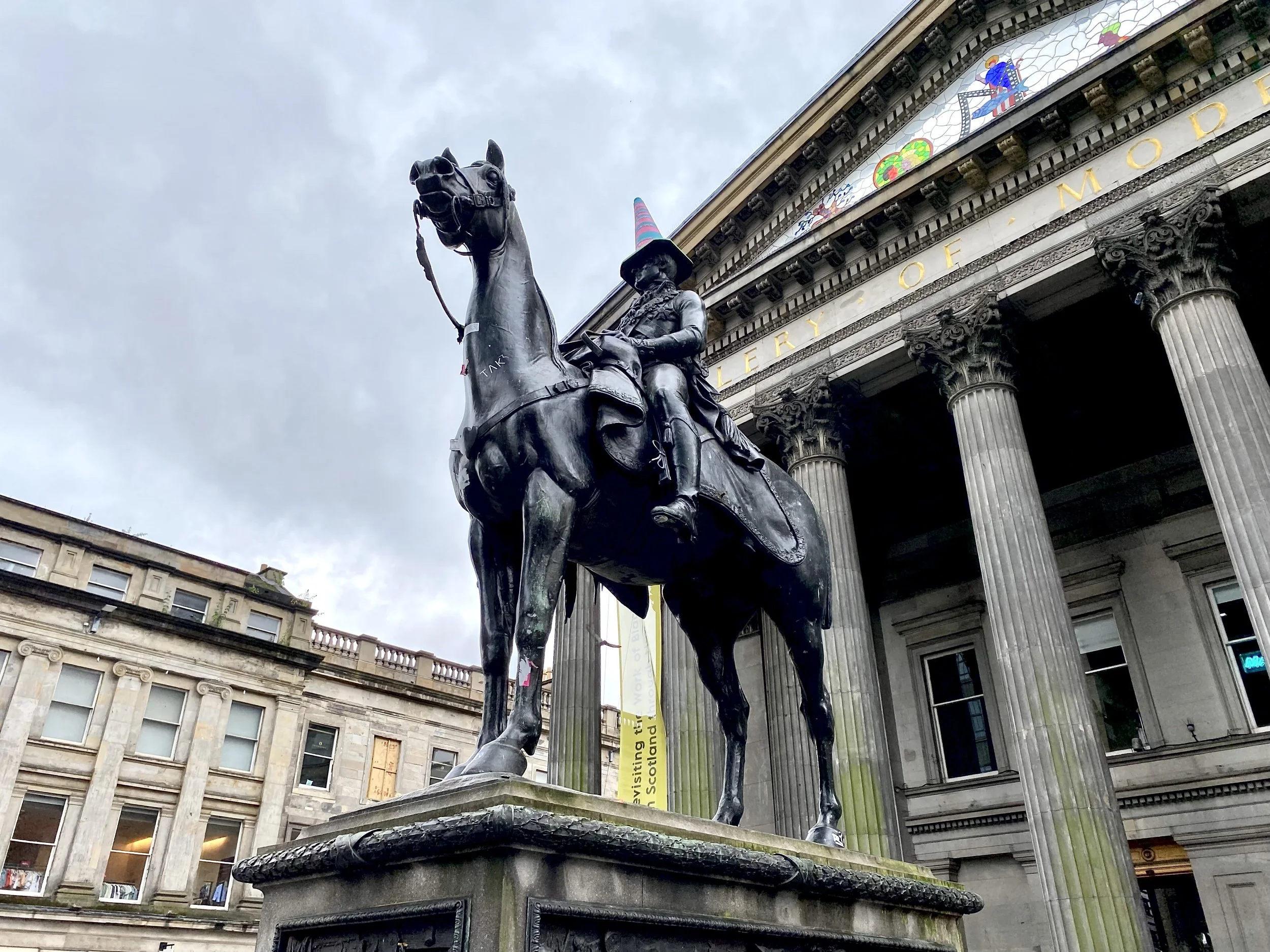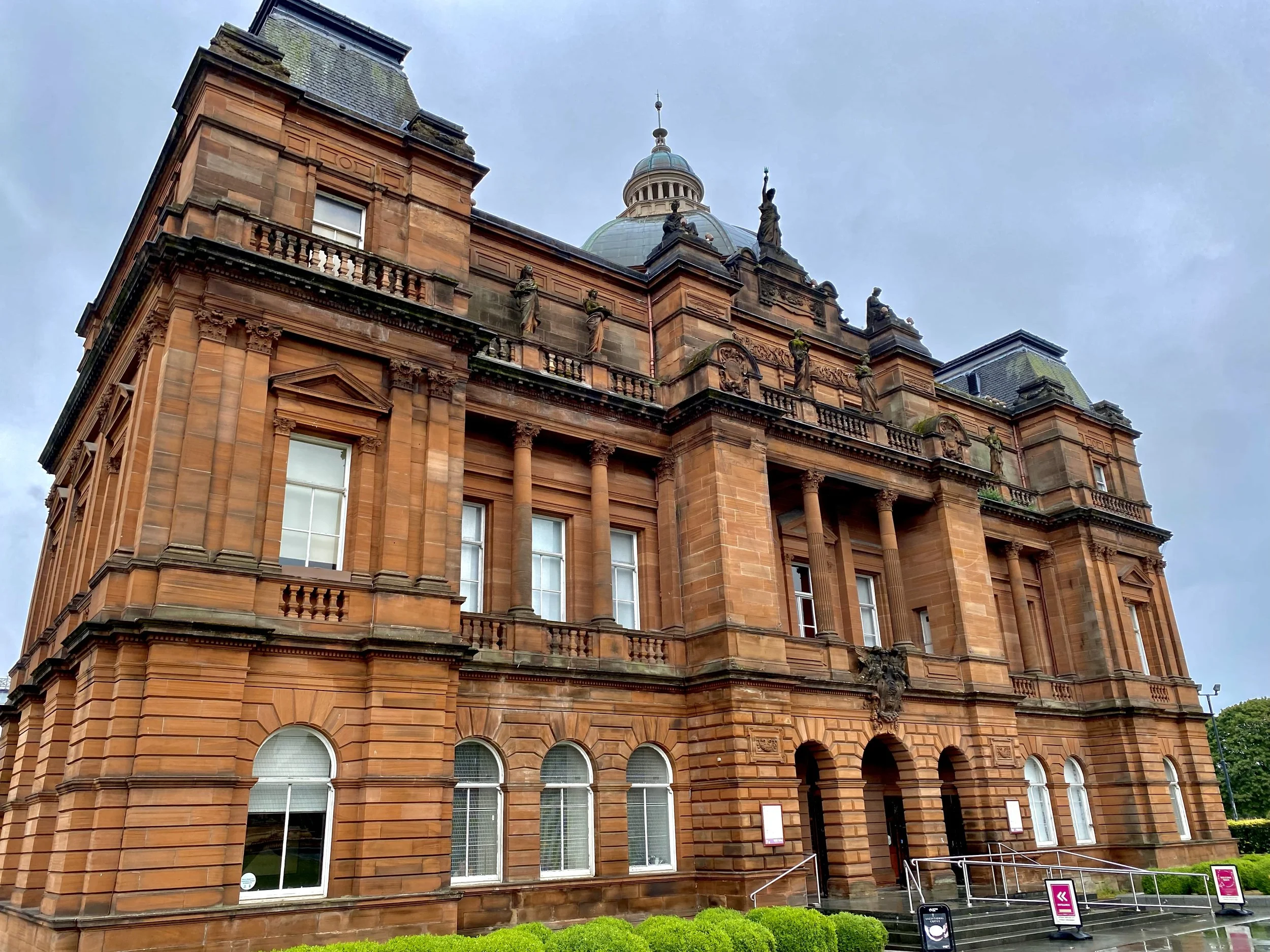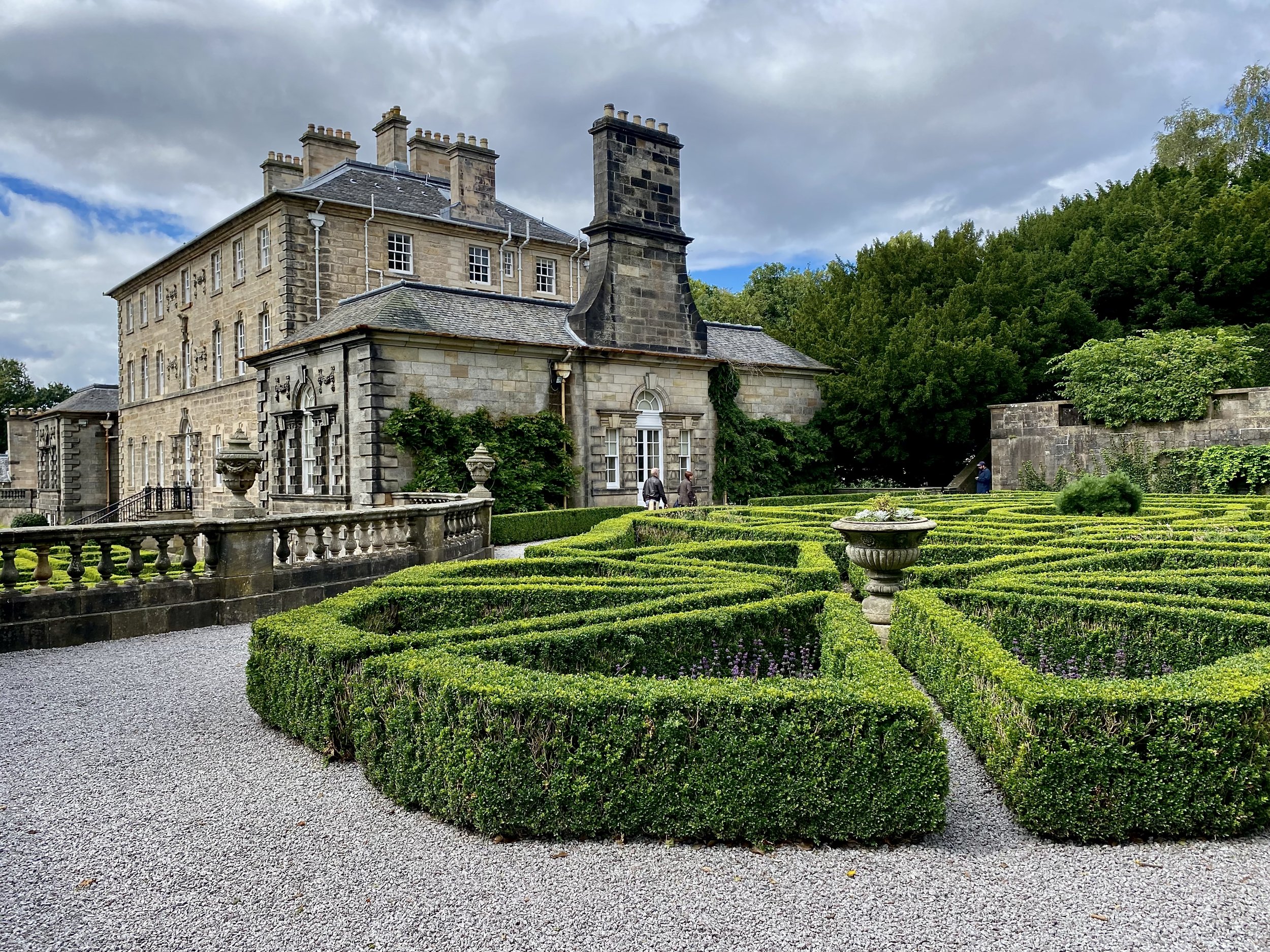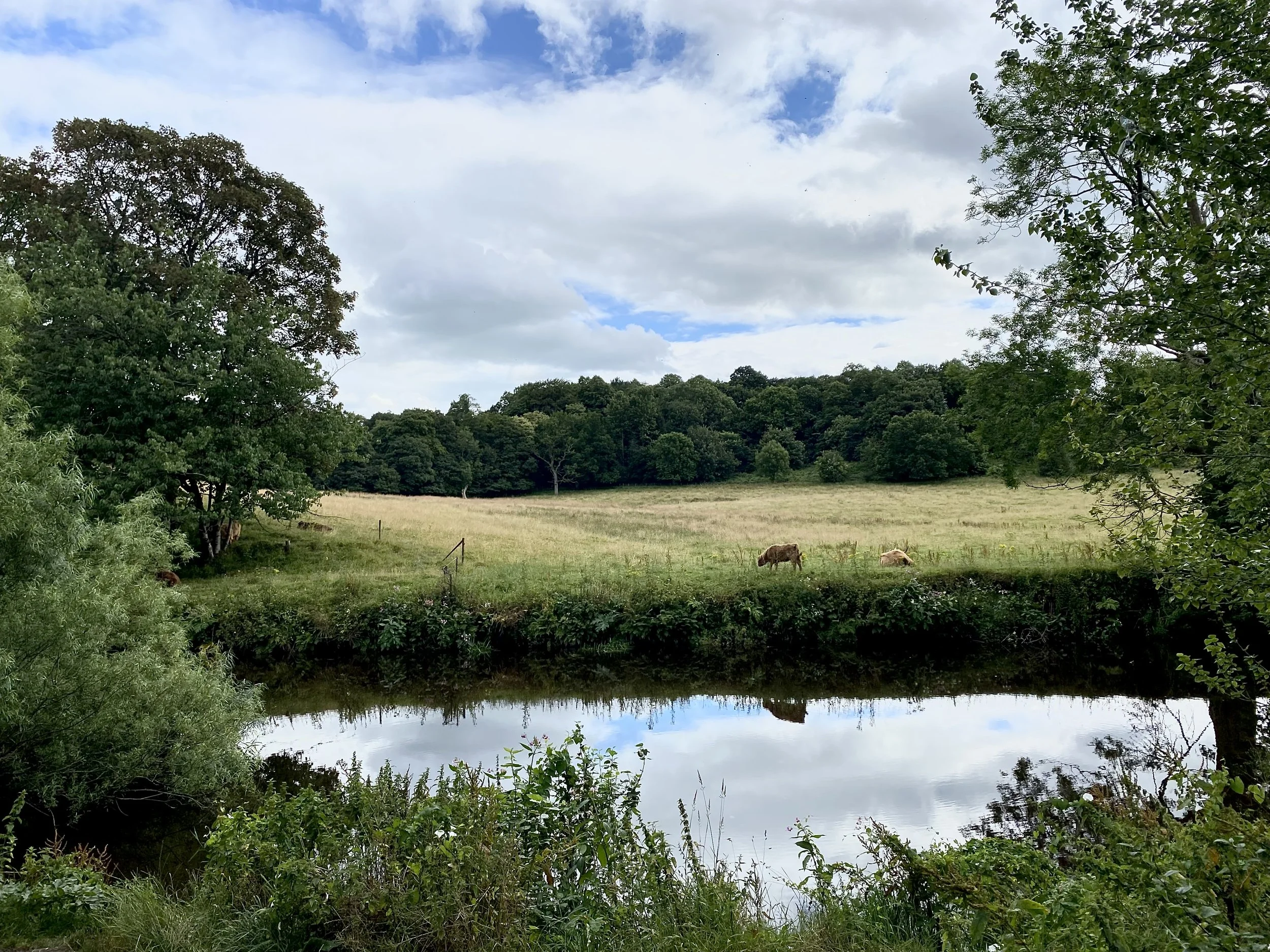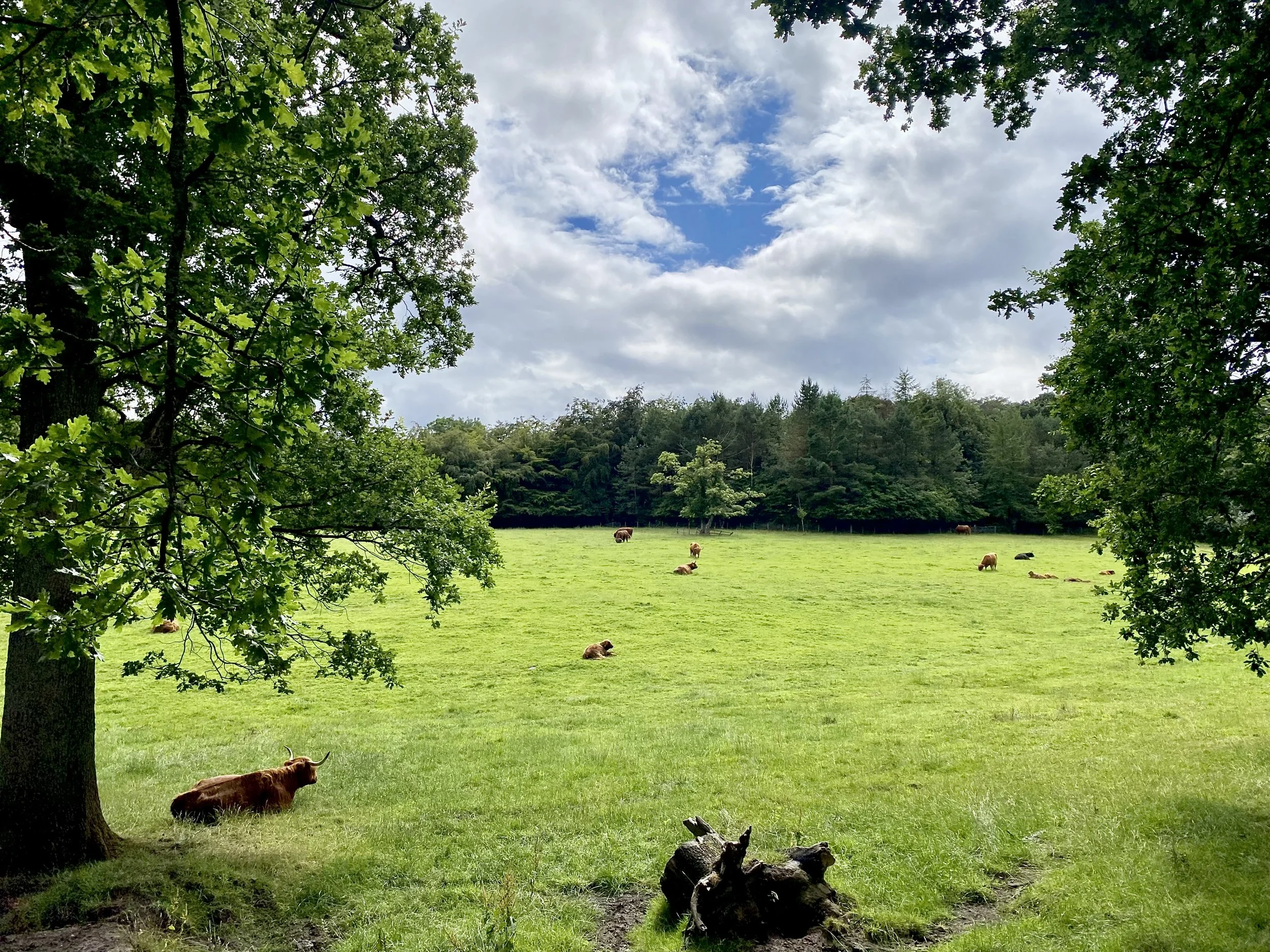Glasgow’s Investments in Culture Paid Off
A CITY THAT TAKES ITS ROLE AS A CULTURE CAPITAL SERIOUSLY
When I was planning my time in Scotland, I had a few people suggest I skip Glasgow and spend all my time in Edinburgh. Having been to both now, I think it’s simply unfair to compare the two. They offer very different things.
Glasgow grew to be the “second city” of England during the industrial era - when immigration into the city increased dramatically and manufacturing took hold. During that time, the city was cramped, with most people living in tight, unsafe living quarters; at the same time, wealth increased rapidly and the city flourished in many ways. It housed multiple global exhibitions, produced world-famous artists and architects, and became a major global player.
Throughout the 20th century, the city declined in both economy and population as industry left. During that period, the city successfully re-located many residents into suburbs, reducing the overcrowding, and the city council began a strategy of making Glasgow a world cultural center. The strategy has paid off, and now Glasgow is known for several of its museums and performance bodies - as well as its contemporary culture. One way of describing its culture is: in front of the modern art museum, there’s a statue that is usually sporting a traffic cone as a hat. Another way: I found a queer, anarchist, Yiddish, pay-what-you-can vegan cafe - and it fit right in. The city is cool, authentic, and evolving.
Glasgow deserves your time if you’re in Scotland. It won’t win on architecture, natural beauty or charm - but it bleeds culture and is a vibrant good time.
HEAD TO THE MUSEUMS
Odds are, you’ll have at least one rainy day in Glasgow; it is Scotland. The good news about that is that many of the best things to do in Glasgow are indoors. The city has many free, internationally recognized museums. Here are a few of them:
Kelvingrove Art Gallery and Museum: A thoughtfully curated art and natural history museum with a focus on Scottish history and artists; it’s one of the best learn-as-you-go designs I’ve seen. The building itself is magnificent and in the middle of one of the city’s better parks (Kelvingrove Park).
Glasgow Modern Art Museum: Located downtown, this museum is introspective in its layout and design. As you see its collection, you’ll also learn about how art gets selected, made, and interpreted. The museum is as much as display of art as a discussion on what art is.
The Burrell Collection: This is a museum that houses the eclectic possessions of an extremely rich family who donated all of it to the city. Just revamped, its new setup is less about the things in the collection, and more a celebration of craftsmanship and expression. There’s something personal about seeing how one family helped fund and support a variety of arts and crafts, including more contemporary and controversial pieces. It lends a reminder that art is meant to be loved - and that anything can be art.
Riverside Museum: This is a transportation museum, which is fitting for Glasgow’s historic role in shipbuilding and transportation. The building itself is modern and really cool looking.
The Hunterian Gallery: A museum housing an eclectic collection of artifacts - from art to meteorites. It was closed the day I was hoping to go, so I didn’t get a chance to check it out.
The People’s Palace: A museum about the history and development of Glasgow. It’s small, making it an accessible, fun way to learn about the city. The building itself is really cool - and its in a park that was once prominent for the promenades of the wealthy. (How very Bridgerton!)
Glasgow Botanical Gardens: Both an arboretum and set of greenhouses that thoughtfully set out and group the plants with information so that you can learn while enjoying the natural beauty.
Glasgow is also home to several famous performance bodies like the National Orchestra, the Scottish Ballet, and the Scottish Opera - so it’s a great city to catch a show.
EXPLORE THE NEIGHBORHOODS
Glasgow is Scotland’s largest city - so there’s a lot of places to shop, eat, and explore. The most prominent is Buchanan Street downtown. I recommend walking down Sauchihall and Buchanan - which both bustle and have some of the city’s best architecture.
Many people recommend walking through the West End, which is where I stayed. That area is really pretty and the architecture is nice, but the local economy is a bit boring in my mind. I would recommend heading south of the river and checking out Strathbungo and Shawland. I think that’s where the quirky, contemporary, counter-culture Glasgow spirit really shines.
RELAX AT POLLACK COUNTRY PARK
A ways out of center city, Pollack Country Park used to be the private estate of one wealthy family. After they donated it to Glasgow, it was made into what I think is the city’s prettiest park. It still has the family’s house, gardens and cattle range; it’s Scottish cattle, so they’re long-haired and absolutely adorable. It feels a bit like going to the Biltmore Estate in Asheville - but free. It’s a really nice place to stroll around for a few hours - and it’s also where the Burrell Collection is.
OTHER THINGS TO DO
Glasgow is the UK’s fifth largest city, so there’s no shortage of things to do. Here are some of the other common ones:
Visit the Glasgow Cathedral and Necropolis: The cathedral is pretty standard fare: nice but not particularly noteworthy. What’s more interesting is the necropolis next to it - which has a dramatic landscape, interesting memorials, and good views.
Take a Tour of City Hall: During the week, there are free tours of the City Hall downtown. I didn’t get the chance to go, but I heard good things.
Head to the Highlands: Glasgow is a gateway to the Highlands, so you can book a tour up to some of Scotland’s most dramatic views.
Most of all, I think the best thing to do in Glasgow is just to stay present and watch out for what’s happening. If you stay open, you’ll find cool shit in Glasgow.

